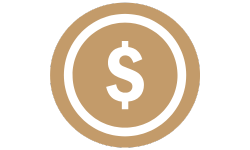Introduction
Not all debt is created equal. Some types of debt—like mortgages or student loans—can be strategic investments in your future, while others—like high-interest credit card debt—can become financial traps. To manage your debt wisely, it’s crucial to understand what kind of debt you’re dealing with, what the terms mean, and how to navigate repayment in a way that works for you. This article breaks down common debt types, key terms you should know, and how each one fits into your financial picture.
Related: Let Us Help You Get Out of Debt: Proven Strategies to Regain Financial Freedom –
Secured vs. Unsecured Debt
Understanding the difference between secured and unsecured debt is fundamental to managing risk and knowing what you stand to lose if you can’t repay.
Secured Debt
This type of debt is backed by collateral—an asset the lender can claim if you default.
- Examples: Mortgage (backed by your home), Auto loan (backed by your vehicle)
- Pros: Often comes with lower interest rates
- Cons: You risk losing your property if you fall behind
Unsecured Debt
Not tied to any asset, lenders rely solely on your creditworthiness.
- Examples: Credit cards, personal loans, medical debt
- Pros: No risk of repossession
- Cons: Higher interest rates due to greater lender risk
Tip: If you have both types, prioritize unsecured debts first, especially if they carry higher interest.
Revolving vs. Installment Debt
Knowing whether your debt is revolving or installment helps you better track your repayment obligations.
Revolving Debt
You have a credit limit and can borrow repeatedly up to that amount.
- Examples: Credit cards, home equity lines of credit (HELOCs)
- Features: Payments vary based on your balance; interest accrues on the unpaid portion
- Risks: Easy to overspend and build up high-interest balances
Installment Debt
Borrow a fixed amount and repay it over time in regular, set payments.
- Examples: Mortgages, student loans, car loans, personal loans
- Features: Predictable monthly payments make budgeting easier
- Risks: Longer terms can mean more interest paid over time
Key Terms to Know
Debt can be confusing. Understanding these common terms will help you evaluate loan offers and stay informed.
- Principal: The original amount borrowed, not including interest or fees
- APR (Annual Percentage Rate): The total yearly cost of a loan including interest and fees, expressed as a percentage
- Amortization: A breakdown of each loan payment, showing how much goes to principal vs. interest over time
- Grace Period: The amount of time you have after a due date before interest or late fees apply
- Default: Failure to repay a loan, often triggering collections or legal action
- Debt-to-Income Ratio (DTI): A measure lenders use to determine your ability to repay new loans
Tip: The lower your DTI, the better your chances for loan approval and favorable rates.
Common Types of Debt Explained
Each type of debt has different repayment terms, benefits, and risks. Here’s what you should know:
Credit Cards
- Type: Unsecured, revolving
- Interest: Typically high (15% to 25% APR)
- Use: Everyday spending, emergencies
- Watch out for: Interest charges, fees, and rising balances
Student Loans
- Type: Installment; can be federal or private
- Interest: Often lower for federal loans; some options for income-based repayment
- Benefits: May offer forgiveness or deferment
- Consider: Start repayment as soon as possible to avoid capitalized interest
Auto Loans
- Type: Secured, installment
- Interest: Depends on credit and loan length
- Risk: Car may depreciate faster than the loan balance
- Tip: Don’t finance a car for more than five years
Mortgages
- Type: Secured, installment
- Interest: Varies based on term and type (fixed vs. adjustable)
- Benefit: Builds equity, may offer tax advantages
- Risk: Foreclosure if you miss payments
Personal Loans
- Type: Unsecured, installment
- Use: Debt consolidation, major expenses
- Interest: Varies widely; shop around for best rates
- Watch for: Origination fees and prepayment penalties
Why Knowing the Type of Debt Matters
Tailoring your repayment strategy starts with understanding your debt. Here’s why:
- Different terms mean different priorities. High-interest credit card debt usually takes top priority.
- Risk levels vary. You may want to pay off secured loans to avoid losing assets, or prioritize unsecured debt if it has high interest.
- Consolidation options depend on debt type. Some debt types qualify for balance transfers or consolidation loans.
How to Organize Your Debt for Better Management
Create a simple chart or spreadsheet with:
- Type of debt
- Balance
- APR
- Minimum payment
- Due date
Then, rank them by:
- Interest rate (for the avalanche method)
- Balance size (for the snowball method)
Tip: Use free tools like Undebt.it or Excel templates to keep everything visual.
Debt Strategy by Type
Each debt type may require a different approach.
- Credit Cards: Try to pay more than the minimum, consider balance transfer offers, or consolidate with a personal loan.
- Student Loans: Explore income-driven repayment, deferment, or public service forgiveness.
- Mortgages: Consider refinancing for better rates or making one extra payment per year to reduce interest.
- Auto Loans: Avoid extending the term; try rounding up payments or refinancing if needed.
- Medical Bills: Negotiate for payment plans or financial aid from providers.
Final Thoughts
Understanding your debt is the first step to eliminating it. Once you know what types you owe, how much interest you’re paying, and how your payments are applied, you can build a smarter strategy that saves money and puts you in control.
Knowledge is power—especially when it comes to your financial future. By learning how each type of debt works, you can make better decisions, avoid costly mistakes, and take confident steps toward becoming debt-free.
Start today. The more informed you are, the more effective your debt payoff journey will be.
Disclaimer: The content on this post is for informational and educational purposes only and should not be considered professional financial advice. Your path to a debt-free and financially secure future awaits!

